Iridology is a great supplemental natural modality that can be used with dogs, cats, people, horses, and so on to help analyze various organs and systems in the body to see which are potentially weak and which potentially strong. You can then use this information to lend additional support to those systems that may need a bit of extra help. Because iridology is an analytical tool, it is best when used in conjunction with another natural modalities, such as essential oils, homeopathy, chiropractic, and so on. It is not intended to be a stand-alone tool.
Iridology as we know it today was first developed by Dr. Ignatz von Peczely and Reverend Nils Liljequist in the late 1800s. The two men worked independently, but came up with charts and “iris maps” that were actually quite similar. According to the book Visions of Health, iridology is the “art and science of analyzing the color and structure of the iris of the eye to gain valuable health information.” Originally, it was developed for people, but more recently Dr. Mercedes Colburn mapped the equine, feline, and canine irises. Her maps allow pet owners and veterinarians alike to glean valuable information from studying a particular animal’s irises.
The Iris
The iris, the colored portion of the eye, of every single eye, is different. No two animals have the same iris, and even in the same animal, the left and right iris can be very different. These differences are all used by iridologists to gain an understanding of the body’s systems and how well they are functioning. For example, if the fibers in the iris are tight, or close together, the body is generally strong and therefore more resistant to disease (in other words, it has a strong terrain). Loose fibers, or ones that aren’t close together, generally indicate a body that is weaker and more susceptible to disease. But iridologists can go deeper than that. Using the iris maps, they can gain insight into which organs and systems may be weaker or out of balance. Describing the entire iris map is beyond the scope of this article, but we will touch on the highlights of what the irises indicate.
Psora and drug deposits
Often, iridologists observe colored spots of varying densities in the iris. These spots can be either psora or drug deposits. Psora are heavy, dark patches that typically indicate inherited chemicals. Drug or other chemical deposits show up in the iris as bright yellow, red, or orange spots. Usually, they are smaller than the psora and are scattered around the iris.
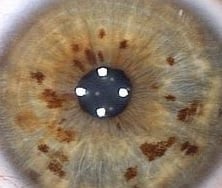
Weakened constitutions
The presence of lesions, either lacunae (closed lesions), crypts (small, closed, very dark lesions), or “open” (lesions that are open on one side and closed on the other), indicate inherited or acquired weaknesses in the body. Based on their location, the iridologist can determine which areas of the body are weaker and therefore need to be strengthened.
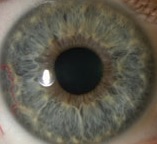
Toxic, slow-moving bowels
When a bowel is full of toxins and moving sluggishly, the iris shows lines called radii solaris. These long, dark lines branch out (seemingly from the pupil) like bicycle spokes. The darker and denser the “spoke,” the more intense the toxic condition. Generally speaking, the presence of radii solaris indicate a need to detoxify the bowls and body. They may also indicate parasitic infection.
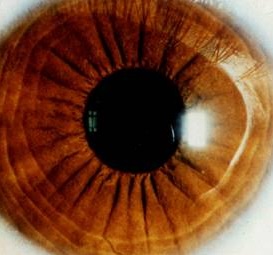
Excessive nerve tension
Nerve rings, which are formed by the iris fibers buckling and appear as concentric circles or partial arcs in the iris, indicate excessive nerve tension. They can indicate that the individual is under stress, which can present as indigestion, muscle tenseness, headache, etc. If the nerve rings are heavy, it suggests that the subject needs to relax and reduce stress.
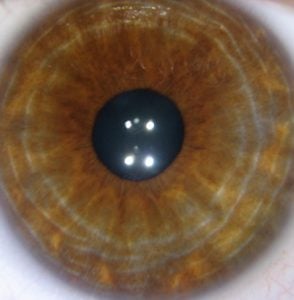
Skin issues
When there is a darkened rim at the periphery of the iris (called a scurf rim), it indicates that the skin is underactive and isn’t eliminating properly. This further suggests that toxins and waste materials may be accumulating faster than the skin can eliminate them. The scurf rim can vary greatly—it may be thin, thick, dark, or light, but in all cases, it means that toxins are not being eliminated fast enough. In this case, a reduction in the toxins coming in may be of great benefit.
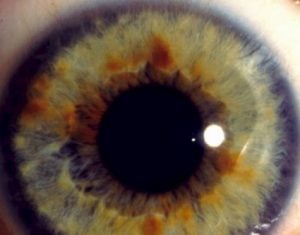
Slow lymph system
A slow, sluggish, and underperforming lymph system appears in the iris as small, cloud-like spots. Generally, the spots are found towards the outside of the iris, but they can move closer to the interior in some instances. These spots, which are called lymphatic rosary, look like a string of pearls or the beads of a rosary, which is where they got their name. The fact that the spots are white indicates inflammation. If the spots are yellow or light brown, it indicates that the condition has existed for a while. When you see this, it may indicate that there is not a proper amount of exercise (remember, the lymph is moved through exercise).

Did you find this article useful? Would you like 100% free access to more articles like these, and free access to over 5,000 vetted pet care service professionals throughout the United States? Sign up here for a free Petworks account, and take 10% off your first booking, on us!
Quote: “”The iris is a window to the soul, and in the case of our beloved pets, it’s a map to their inner health. Pet Iridology offers a unique, non-invasive glimpse into their constitution, vulnerabilities, and potential imbalances, empowering us to make informed choices for their well-being.” – Petworks Founder, Kevin Kinyon
Chemical imbalances
When there is a chemical imbalance in the body, a solid white ring circling the iris at the periphery appears. This is known as a sodium ring, and it is a deposit in the corneal tissues.
These are just a few of the things that iridology can help you see. To fully understand iridology, see a trained iridologist or review the equine, feline, and/or canine iris maps that Dr. Colburn developed. As with all the other modalities, iridology is meant to help support you in making sure your pet’s body is balanced and strong. It is a great analytical tool that you can use to help guide you in seeing which parts of your pet’s body may need extra support so that they can be strengthened, revitalized, and brought back into harmony with the body’s other systems.
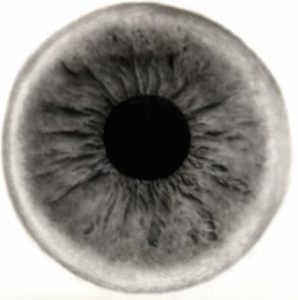
Conclusion
These are just a few of the things that iridology can help you see. To fully understand iridology, see a trained iridologist or review the equine, feline, and/or canine iris maps that Dr. Colburn developed. As with all other modalities, iridology is meant to help support you in making sure your pet’s body is balanced and strong. It is a great analytical tool that you can use to help guide you in seeing which parts of your pet’s body may need extra support so that they can be strengthened, revitalized, and brought back into harmony with the body’s other systems. Book Animal Homeopathic Care on Petworks, today.

 About the Author:
About the Author:
Kristin Clark started Canine Health Promotion so she could help dogs thrive. Serving clients whose dogs range from top performance dogs to beloved family pets, Kristin is passionate about helping all dogs live their best lives. She truly understands this journey, because she walks it herself every single day. With four dogs of her own, she knows just how hard it can be to find help for health issues using conventional means. Kristin is board certified by the American Council of Animal Naturopathy as a Carnivore Nutrition Consultant and a Small Animal Naturopath, and devotes a great deal of time to researching how best to help dogs live their optimal lives. Kristin also writes for, edits, and publishes Raw Pet Digest, an international online magazine devoted to helping dogs and cats live and thrive naturally.

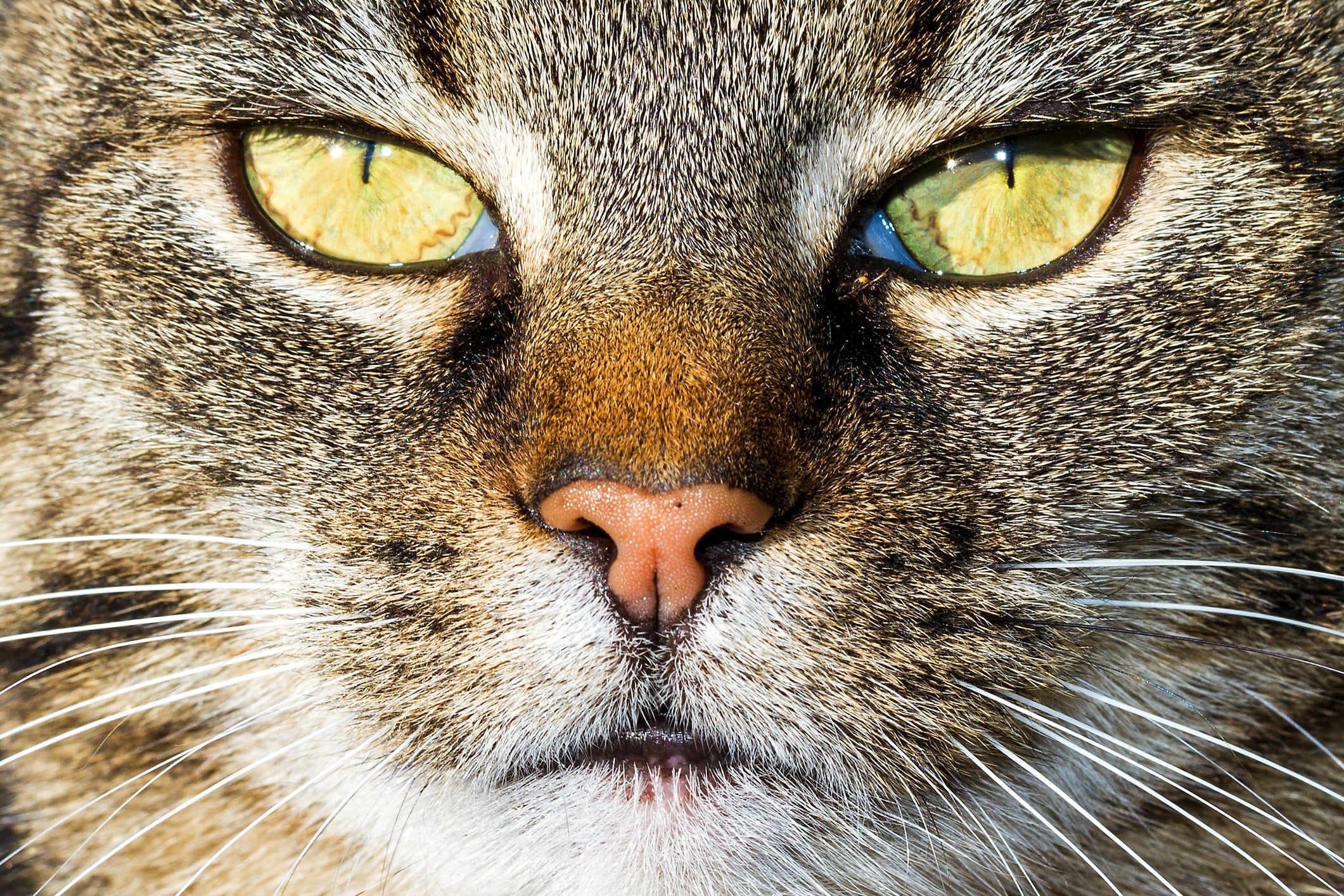

Unfortunately, iridology has long been disregarded as pseudoscience..that is it sounds like science but it isn’t. There’s a very good reason that trained veterinarians do NOT use this technique, it simply does not work.
Unfortunately people like Kristin get duped into buying expensive courses, cameras and charts under the pretence that they are now trained to diagnose illness in people and animals. Of course, the very real risk of misdiagnosis or fatal diseases going undiagnosed cannot be understated.
So please, see a trained veterinarian.
Dave, obviously you’re a vet or simply do not understand how the body heals. You (or a vet) have a financial gain. You treat symptoms and never find the cause, because it’s not profitable. That is the reason medical industry will never find a cause for anything happening in the body but instead blame the body for mysterious causes, needlessly administering chemicals for profit. Iridology has been around for a lot longer than pharma and doctors. Who are you to say it’s a pseudo science?